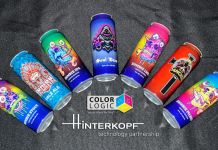According to Verdigris’ Laurel Brunner, striking a balance between growth and environmental responsibility is far from easy. Part of why it is so hard, is that there are so many different perspectives on sustainability.
Some organisations treat it rather frivolously, as if the environment is a passing trend. Others go to the other extreme, appearing to want to turn the clock back to some bucolic pre-industrial age. Neither will get us very far, so achieving growth in an environmentally sustainable context requires more nuanced thinking.
Fortunately companies and governments increasingly understand that for improvements to be made, sustainability and environmental awareness need to be core to our activities. Much as we are trained that it’s uncool to drop litter, so consideration of the impact our actions have on the environment should be part of our collective psyche. For graphics professionals, this is easy because there are plenty of ways in which we can make media production more sustainable. From using recycled substrates and selecting the best production method, through to working with printers who have established waste management procedures, it all makes a difference.
But we can always do more. Our procurement policies for goods and services, for instance, can help to drive changes to peoples’ thinking. Your procurement policy can champion whatever it is that matters most to your company. You may care deeply about materials sourcing and reject all substrates from companies trashing the rain forests. Or perhaps you want to minimise consumables waste in the print run, so you opt for wholly digital production.
Depending on how big your company is, your policy can be ambitious. Ricoh, the leading green supplier to the graphic arts and light production markets, has three principles underlying its procurement policy. They are resource conservation and recycling, energy conservation and the prevention of pollution. Monitoring the performance of the company’s suppliers for such complex goals, is within scope for an organisation of Ricoh’s size. It is probably beyond the resources of most small to medium sized enterprises, but the principles are still worth considering.
Ideally your procurement policy should explain why you have it in the first place. It should not be too idealistic and should be heavy on partnership, the basis for all successful sustainability projects. Provide alternatives and options for compliance, so that your policy is essentially a guidance document. Guiding partners and customers towards environmental management improvements is probably more important than trying to dictate new behaviours.
Come up with a list of what you consider to be mandatory in your suppliers. This could include such things as IS0 14001 compliance or having a zero waste to landfill policy. Some very large companies such as Ricoh, require evidence of continuous management of their environmental management system and for raw materials usage.
If you really want to make a difference to the environment, a procurement policy is a way to communicate your commitment. It’s a statement of intent that explains what you consider to be green and how it fits with your business. It declares your preference for suppliers who demonstrate environmental awareness and mitigation. A cultural shift is underway and environmentally aware procurement policies make a difference. Remember that the big things can only change, if lots of little things change first.
The Verdigris Project is supported by Agfa Graphics (www.Agfa.com), Digital Dots (http://digitaldots.org), efi (www.efi.com), FESPA (www. fespa.com), HP (www.hp.com/environment), Kodak (www.Kodak.com/go/sustainability), mondi (www.mondigroup.com/products), Pragati Offset (www.pragati.com), Practical Publishing (www.practicalpublishing.co.za), Ricoh (www.ricoh.com), Shimizu Printing (www.shzpp.co.jp), Splash PR (www.splashpr.co.uk), Unity Publishing (http://unity-publishing.co.uk) and Xeikon (www.xeikon.com).
This work by the Verdigris Project is licensed under a creative commons Attribution-NoDerivs 3.0 Unported license http://creativecommons.org/licenses/by-nd/3.0/





















